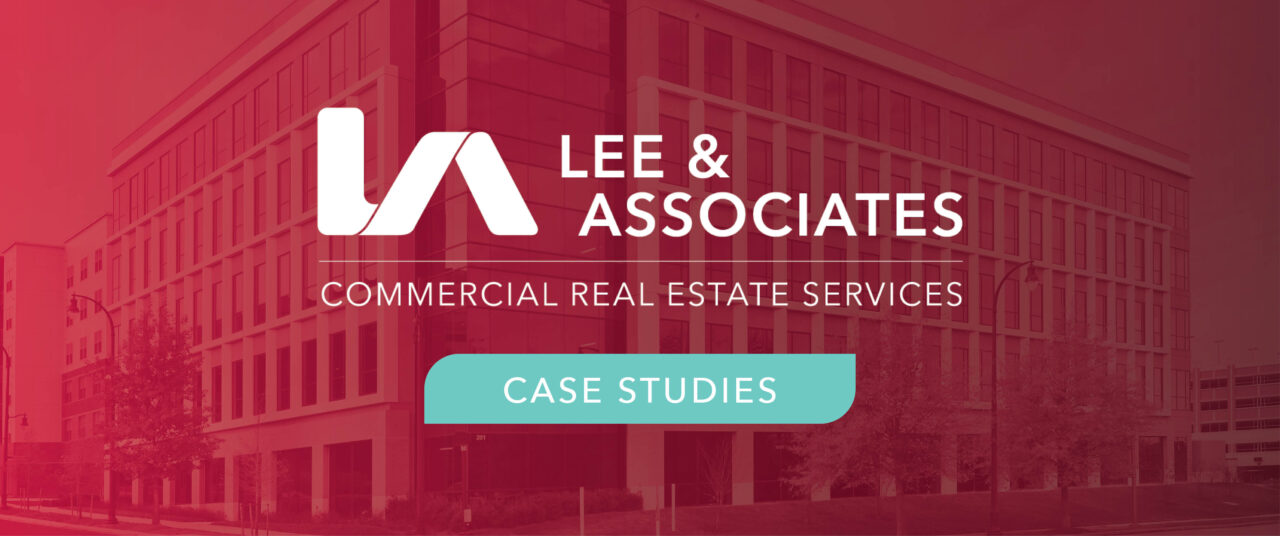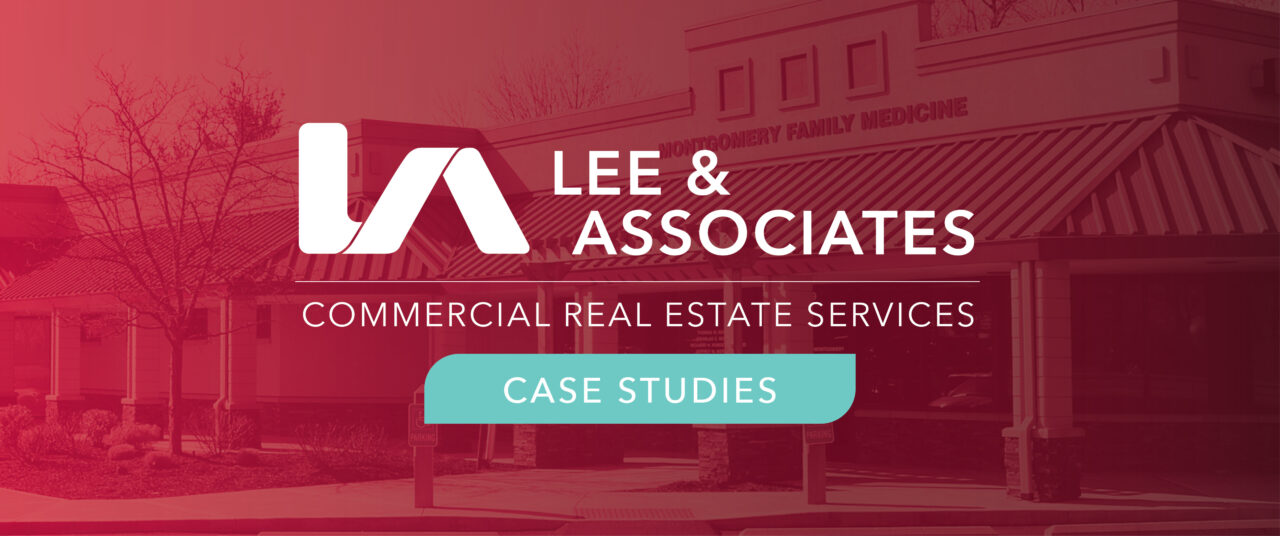Healthcare Commercial Real Estate
Brokers & Advisory Services
Lee & Associates Healthcare Real Estate Advisors specialize in representing and advising medical practices, investors, and landlords across North America. Our leadership team has long term experience, focusing exclusively on healthcare systems, providers and investors. Additionally, but separately, we have healthcare teams that represent landlords of medical buildings to lease space. We find it important to keep these separate to ensure conflict-free representation.
HEALTHCARE SYSTEMS, PHYSICIAN GROUPS, & INDEPENDENT PRACTICES
Our consultative approach is customized to each of our clients, as we understand each provider has different requirements. We identify goals, needs and desires of our clients and use our exceptional research to find market rates for leases and sales. In doing the upfront due diligence, it ensures projects are completed in a cost-effective, timely manner to begin or resume seeing patients and generate revenue sooner.
We have many strategic partnerships in healthcare real estate. We view landlords as partners to achieve the best overall long-term outcomes. We organize a team very early in the process (architect, contractor, attorney, equipment supplier, banker, etc.) which helps us provide
- Improved patient experience
- Physician alignment & staff retention
- Efficient cost control
- Enhanced outcomes & quality of care
MEDICAL INVESTORS & LANDLORDS
Our process begins with determining the strengths, opportunities and value of a property. The goal of our analysis is to maximize provider efficiencies, which makes it easier to lease a property and enhance value. We sell and lease medical investment properties at market prices because we have
- Deep market knowledge through research, and analysis
- Experience in thorough and accurate broker opinion of value
- Strong relationships with other healthcare real estate advisors including developers,
REITs, institutional and local investors and healthcare landlords
LEADERSHIP
Directors of North America
Healthcare Group
Chris Jacobson, CCIM
Susan Wilson, CCIM
To contact a healthcare advisor, please click on one of the contacts listed above or visit the professionals tab.
HEALTHCARE REAL ESTATE ADVISORY SERVICES
Healthcare Real Estate Advisory Services Representing
Healthcare Providers & Systems, Physician Groups & Independent Practices
We’re with you the whole way. We conduct an extensive upfront interview with clients, determine their unique circumstances and resolve any outstanding issues. After completing that, we present an actionable plan. We are committed to our core pillars throughout the process of our healthcare provider real estate transactions. These guiding principles have proven successful time and time again.
- Improved patient experience
- Physician alignment & staff retention
- Efficient cost control
- Enhanced outcomes & quality of care
- Purchasing real estate: After our initial interview and decision to move forward, we coordinate with our client’s established attorneys with offer preparations, term negotiations and offer acceptance. We continually focus on cost and time constraint details throughout the process to equip clients with powerful decision-making information. Our services include term sheet preparation and full negotiations which can save time with attorneys. We monitor and advance the following topics through closing:
- Governmental approvals
- Environmental surveys
- Inspections
- Appraisals
- Loan adherence and approvals
- Sworn construction statements
- Architectural drawings (including bid sets)
- Permit sets and full construction drawings
- Titles and closings
- Selling real estate: Our Broker Opinion of Value can help determine market value and identify strategies to increase sale price. As a part of our process, we may advise our clients to expand the functionality of their facility to include other business industries, which draws a broader buyer market and often multiple offers. We follow every detail of a sale transaction, including the buyer's responsibilities so the transaction has the highest likelihood of closing with the best outcomes. Common situations for selling real estate
- Dispositions of excess sites
- Monetization (sell asset and lease back)
- Relocation
- Consolidation
- Merger
- Changing demographics
- Changing governmental reimbursement
- Redundancy
- Retirement of principles
- Relocating: Delivering healthcare in a construction zone can be difficult. Often, it’s easier to relocate a clinic than it is to remodel an existing one. Remodeling can impact clinic production, or increase after-hours labor costs Whether you’re looking to buy or lease, we serve our clients through strategic relocations.
- Lease: From site selection and lease term negotiations, we are with our clients all the way. Our process ensures the planning is in place before the lease is signed to meet or exceed our client’s timeline and quality expectations. We pay attention to provider needs, staff drivers, efficiencies and alignment. We ensure vendors’ needs are met to allow the time and resources for an exceptional final delivery. We believe the costs associated with opening a facility can be offset by resuming production and in turn, realize revenue quicker. Our process is designed to save time and create efficiencies.
- Renew: Lease renewal is an often-overlooked opportunity to negotiate additional benefits from the Landlord. We help our clients remove previous amortized rental costs, receive additional tenant improvement dollars, and negotiate other rights or opportunities that benefit the provider.
- Sublease: When a site becomes unnecessary, it may be beneficial to sublet the remaining term of a leased premises. Or conversely, it can be an economical option for a provider to sublease space. We investigate the reason for the sublease, so our clients benefit as much as possible, either way.
- Development: Developing a facility to a provider’s exact needs can be the perfect solution. A precise location, efficient economics, and predictable long-term maintenance are the benefits of development. We assist our clients in choosing the location; vetting the right developer and appropriate lender, negotiating lease terms and finding other tenants for the medical development. We pay attention to all of the components of a development so the anticipated outcome is achieved.
- Monetization strategy: An owned facility has its long-term benefits within a provider’s portfolio. However, there are times when a provider needs to liquidate their real estate to deliver care in other ways. The right solution may be to monetize (sale-lease-back) the owned asset. We help design a marketable lease that fits our client’s exact needs. We hand-pick the right medical landlord who can purchase the facility, providing the needed cash to our provider client. A good monetization strategy can optimize operational efficiency while unlocking needed capital.
- Advisory: Visit the Healthcare Real Estate Advisory section.
- Regulation compliance: Visit the Healthcare Real Estate Advisory section.
Healthcare Real Estate Advisory Services Representing
Medical Investors & Landlords
- Broker Opinion of Value (BOV): Investors and Landlords need to determine Market Value for various reasons. It may be for lease rate, renewal terms, or a building sale or purchase price. For an investor or landlord, a thorough BOV provides information about market lease rates or property value. Our analysis also identifies strategies to retain tenants, stabilize assets and increase value. Our BOV helps identify the true opportunity of an asset.
- Healthcare Real Estate (HCRE) Investing: We work with buyers and sellers of medical facilities or medical office buildings (MOBs). We provide buyers options in a recession resistant asset class. Often HCRE has long-term leases (10+ years) and high credit/low risk tenants. Healthcare leases are usually triple-net; meaning tenants pay property taxes, building insurance, and most maintenance expenses. We represent buyers and sellers for all medical assets from Class A to value-add with their healthcare real estate investments..
- Landlord Lease Listing: We know the target audience and what is attractive in lease opportunities because we’ve worked extensively with medical tenants as clients. We understand medical tenants’ perspectives and have many relationships with landlords and medical vendors in the industry. We believe it’s important to identify medical tenants that have synergy with other medical tenants in the building and their hospital affiliation. This synergy creates referrals, enhanced patient experience and longer-term tenancy. We are experienced with new leases and lease renewal negotiations. We have a thorough understanding of market rental rates and net effective rates. Real Estate legalities such as the Anti-kickback Statute and Physician Self-Referral Laws (Stark Laws) are a part of our processes when applicable to factor in with the strategy.
- Gap Analysis: Gap analysis is important for all in healthcare real estate. A provider may look for areas that have a high quantity of patients, less competitors, or available work force. A landlord may have healthcare facility vacancies and look for missing specialties in the area where the facility is located to better market and attract tenants. A developer or investor may want a Gap Analysis to understand long-term implications of varying demands on their projects. Regardless the perspective, we conduct an extensive upfront interview with clients, dissect their unique circumstances and translate them into actionable decisions. Gap analysis determines:
- Where holes are between competition, or other providers that may align
- Ideal Locations for doctors, staff, patients and communities
- The demographics to support a particular specialty
- Tenant mix study: Tenant Mix can be important for efficient care delivery. For example, an OBGYN clinic who operates a Mother Baby center, may choose a hospital connected medical building (MOB). It enables doctors, staff and patients to transfer between their clinic and the hospital with ease, such as through the skyway. Another consideration in tenant mix is leveraging synergistic practices. Some types of practices benefit by neighboring others, especially within the same health care system.
- Advisory: Visit the Healthcare Real Estate Advisory page
Healthcare Real Estate Advisory Services
We offer real estate advisory services for healthcare providers, investors or landlords. We use robust software tools provide precise data, taking out the guesswork to make resourceful real estate decisions.
- Broker opinion of value (BOV): Providers, Investors and Landlords all have the need to determine Market Value. This can be for STARK Law/Anti-Kickback Statute compliance, lease rate, renewal terms, building sale or purchase price. For an investor or landlord, a thorough BOV can help you understand market lease rates and property value. Our analysis also identifies strategies to retain tenants, stabilize assets and increase value. For a Provider, Buyer or Lessee, it ensures the rate, price or terms are at market. For all of our clients, our BOV can help identify the true opportunity of an asset.
- Strategic planning: Creating a strategic, long term plan will make the most of your resources as you grow. We collaborate with our clients to outline key values and objectives, identify opportunities and build a sustainable strategic plan.
- Portfolio optimization: After a deep-dive of a client’s current real estate assets, we provide recommended adjustments to enhance overall portfolio performance. We study existing leases, owned assets, and when applicable the asset mix. We consider what services are delivered – where and to what populations – for the best real estate method to deliver our client’s healthcare services. This study may include strategic planning (long term view) or stand alone.
- Transaction management: Throughout transactions, we remain conscious of all the details and variables to remove barriers, which accelerates the process to resume patient care quickly. The shortened timeline direct effects early realization of production revenue, offsetting improvement or relocation costs.
- Lease administration: Our lease administration includes abstracting and monitoring lease details throughout its term on behalf of our clients. Key examples are notice periods and deadlines for intent to renew or vacate, or utilizing all tenant improvement dollars available funded by landlord.
- Demographic & GIS analysis: Our technology provides rich data, and visual charts and maps from geographic studies of populations to guide location decisions. Leveraging GIS tools can benefit patients and staff with precise placement of where people live and work, as well as community and amenity considerations.
- Buy vs. Lease analysis: Many of our healthcare clients need to determine if they should buy or lease a facility. This is an important exercise to review because overtime, owning vs. leasing can financially balance out. Clients may want control of owning their real estate or want the ease of leasing and working with a landlord. Owning can give a perception of more control, but ultimately adds a burden with additional responsibility. However, owning may have tax advantages and management savings. There are many different motivators and criteria to consider, including factors beyond money. We consult with clients to evaluate their unique circumstances and how the economics play out in relation to their strategic long-term plan.
- Gap analysis: Gap analysis is important for all in healthcare real estate. A provider may look for areas that have a high quantity of patients, less competitors, or available work force. A landlord may have healthcare facility vacancies and look for missing specialties in the area where the facility is located to better market and attract tenants. A developer or investor may want a Gap Analysis to understand long-term implications of varying demands on their projects. Regardless the perspective, we conduct an extensive upfront interview with clients, dissect their unique circumstances and translate them into actionable decisions. Gap analysis determines:
- Where holes are between competition, or other providers that may align
- Ideal Locations for doctors, staff, patients and communities
- The demographics to support a particular specialty
- Tenant mix study: Tenant Mix can be important for efficient care delivery. For example, an OBGYN clinic who operates a Mother Baby center, may choose a hospital connected medical building (MOB). It enables doctors, staff and patients to transfer between their clinic and the hospital with ease, such as through the skyway or tunnel. Another consideration in tenant mix is leveraging synergistic practices. Some types of practices benefit by neighboring others, especially within the same health care system.
- Presale lease analysis: Often, when an Investor wishes to sell a building or a provider who owns a building may wish to monetize the asset (sell the facility and lease it from the new owner), the existing leases may need to be reconstructed. We analyze leases and create a strategy that serves a tenant’s practice while supporting the seller’s interests. Whether the asset is being prepared to sell or leases need to be realigned, we have the expertise to improve overall performance.
- Monetization Strategy: A provider who owns a facility may wish to pull equity out of the building to grow, expand locations, attract staff or update equipment. Continuing the same care delivery within the asset, the transaction includes changing to a lease model. Our service starts with a presale analysis, constructing a customized lease, hand-picking your landlord, and selling your building. We have several successful client experiences that benefit long-term goals while attracting a select buyer and future landlord.
- Regulation compliance: We are well-versed in the latest real estate regulations including those specific to health care transactions for full compliance. We value integrity in all real estate exchanges to avoid under the table deals, kickbacks or leases exceeding the cost of ownership.
- Stark Law – a healthcare fraud and abuse law prohibiting physicians from self-referral of Medicare and Medicaid patients to entities sharing a financial relationship.
- Anti-Kickback Statute (AKS) – a health industry statute prohibiting transactions intended to reward referrals for products or services reimbursed by the federal health care programs.
- Capital Lease – we facilitate an intentional strategy and recognition of the accounting treatment for capital and operating leases. To meet the challenges of financial accounting rules, our healthcare clients often re-examine their current lease practices and review criteria:
- Own or lease
- Lease length
- Balance sheet asset or liability
- Operating lease
- Capital lease/finance lease
- Impact on income statement
- Profit and loss results

|
Lee & Associates West Los Angeles
1508 17th Street
Santa Monica, CA 90404 |
|

|
Lee & Associates - New York
1211 Avenue of the Americas
New York, NY 10036 |
|

|
Ryan Abel
CalDRE #01465094
|
Lee & Associates - San Francisco
242 California Street
San Francisco, CA 94111 |

|
Lee & Associates Commercial Real Estate Services
170 120th Avenue NE
Bellevue, WA 98005 |
|

|
Michael Abernathy
CalDRE #00992009
|
Lee & Associates - San Diego, Inc.
6310 Greenwich Drive
San Diego, CA 92122 |

|
Jeff Abramson
CalDRE #00956805
|
Lee & Associates - North San Diego
1902 Wright Place
Carlsbad, CA 92008 |

|
Lee & Associates - Nebraska
200 South 21st Street
Lincoln, NE 68510 |
|

|
Lee & Associates - Atlanta
3500 Lenox Road
Atlanta, GA 30326 |
|

|
Lee & Associates - Arizona
5090 North 40th Street
Phoenix, AZ 85018 |
|

|
Lee & Associates - Chicago
9450 West Bryn Mawr Avenue
Rosemont, IL 60018 |
|

|
Lee & Associates - Nebraska
12020 Shamrock Plaza
Omaha, NE 68154 |
|

|
Frank Adler
CalDRE #01000048
|
Lee & Associates - Newport Beach
100 Bayview Circle
Newport Beach, CA 92660 |

|
Charles Adolphe
CalDRE #00915194
|
Lee & Associates - San Diego, Inc.
6310 Greenwich Drive
San Diego, CA 92122 |

|
Noel Aguirre
CalDRE #01263417
|
Lee & Associates Los Angeles - Long Beach, Inc.
5000 E Spring Street
Long Beach, CA 90815 |

|
Sean Ahern
CalDRE #01081324
|
Lee & Associates - Newport Beach
100 Bayview Circle
Newport Beach, CA 92660 |

|
Lee & Associates - Michigan
26555 Evergreen Road
Southfield, MI 48076 |
|

|
Lee & Associates - Chicago
9450 West Bryn Mawr Avenue
Rosemont, IL 60018 |
|

|
Lee & Associates Commercial Real Estate Services
170 120th Avenue NE
Bellevue, WA 98005 |
|

|
Lee & Associates Raleigh-Durham-Wilmington
100 Walnut Street
Cary, NC 27511 |
|

|
Travis Allan
CalDRE #01482126
|
Lee & Associates Industry, Inc.
13181 Crossroads Parkway North
City of Industry, CA 91746 |

|
Jeff Allen
CalDRE #01313074
|
Lee & Associates Central California
668 Marsh Street
San Luis Obispo, CA 93401 |

|
Lee & Associates | Naples - Ft. Myers
9979 Gulf Logistics Drive
Fort Myers, FL 33913 |
|

|
Lee & Associates - Michigan
26555 Evergreen Road
Southfield, MI 48076 |
|

|
Mason Alsbrooks, SIOR, CCIM
TX #697478
|
Lee & Associates - Houston
10497 Town and Country Way
Houston, TX 77024 |

|
Lee & Associates South Florida
700 W Hillsboro Blvd, Suite 4-203
Broward/Palm Beach, FL 33441 |
|

|
Lee & Associates West Los Angeles
1508 17th Street
Santa Monica, CA 90404 |
|

|
Lee & Associates - Dallas/Fort Worth
14950 Quorum Drive
Dallas, TX 75254 |
|

|
Keith Anderson
CalDRE #01513059 | CalDRE #01513059
|
Lee & Associates - Ontario
3535 Inland Empire Blvd
Ontario, CA 91764 |

|
Lee & Associates - Dallas/Fort Worth
14950 Quorum Drive
Dallas, TX 75254 |
|

|
Lee & Associates - Chicago
9450 West Bryn Mawr Avenue
Rosemont, IL 60018 |
|

|
Lee & Associates - Chicago
9450 West Bryn Mawr Avenue
Rosemont, IL 60018 |
|

|
Lee & Associates - Chicago
9450 West Bryn Mawr Avenue
Rosemont, IL 60018 |
|

|
Lee & Associates - New York
1211 Avenue of the Americas
New York, NY 10036 |
|

|
Lee & Associates - Arizona
5090 North 40th Street
Phoenix, AZ 85018 |
|

|
Al Apuzzo
CalDRE #01323215
|
Lee & Associates - North San Diego
1902 Wright Place
Carlsbad, CA 92008 |

|
Victor Aquilina
CalDRE #01936761
|
Lee & Associates - North San Diego
1902 Wright Place
Carlsbad, CA 92008 |

|
Lee & Associates - Chicago
9450 West Bryn Mawr Avenue
Rosemont, IL 60018 |
|

|
Greg Archer
CalDRE #00865994
|
Lee & Associates Central California
5401 Business Park South, Suite 122
Bakersfield, CA 93309 |

|
Lee & Associates Industry, Inc.
13181 Crossroads Parkway North
City of Industry, CA 91746 |
|

|
Tim Arguello
CalDRE #01055859
|
Lee & Associates - Newport Beach
100 Bayview Circle
Newport Beach, CA 92660 |

|
Alfredo Arguello
CalDRE #02015175
|
Lee & Associates - Riverside
25240 Hancock Avenue
Murrieta, CA 92562 |

|
Ian Armbruster
CalDRE #02151900
|
Lee & Associates - Ontario
3535 Inland Empire Blvd
Ontario, CA 91764 |

|
Chris Armes
CalDRE #01379750
|
Lee & Associates - North San Diego
1902 Wright Place
Carlsbad, CA 92008 |

|
Nathan Arnold, CCIM
MN #20153149
|
Lee & Associates - Twin Cities
1601 Utica Avenue South
Minneapolis, MN 55416 |

|
Matthew Artukovich
CalDRE #01188251
|
Lee & Associates Industry, Inc.
5675 Telegraph Rd
Commerce, CA 90040 |

|
Anita Artukovich
CalDRE #00851588
|
Lee & Associates Industry, Inc.
5675 Telegraph Rd
Commerce, CA 90040 |

|
Clarke Attaway
SC #110474
|
Lee & Associates Charleston
960 Morrison Drive
Charleston, SC 29403 |

|
Michael Avendano
FL #SL3323947
|
Lee & Associates South Florida
7925 NW 12th Street, Suite 301
Miami, FL 33126 |

|
Lee & Associates - Atlanta
3500 Lenox Road
Atlanta, GA 30326 |
|

|
Lee & Associates West Los Angeles
1508 17th Street
Santa Monica, CA 90404 |
|

|
Dan Bacani
CalDRE #01385413
|
Lee & Associates - Pasadena
1055 E. Colorado Blvd.
Pasadena, CA 91106 |

|
Peter Bacci
CalDRE #00946253
|
Lee & Associates Industry, Inc.
5675 Telegraph Rd
Commerce, CA 90040 |

|
Lee & Associates - WBE, LLC
110 Fieldcrest Avenue
Edison, NJ 08837 |
|

|
Christian Baena
FL #SL3389402
|
Lee & Associates South Florida
7925 NW 12th Street, Suite 301
Miami, FL 33126 |

|
Olivia Baffert
CalDRE #02211874
|
Lee & Associates - North San Diego
1902 Wright Place
Carlsbad, CA 92008 |

|
Lee & Associates Commercial Real Estate Services
320 W Galer Street
Seattle, WA 98119 |
|

|
David Bailey
TN #357100
|
Lee & Associates - Nashville
333 Commerce Street
Nashville, TN 37201 |

|
Lee & Associates Raleigh-Durham-Wilmington
100 Walnut Street
Cary, NC 27511 |
|

|
James Bakker, CCIM
SC #88584
|
Lee & Associates Charleston
960 Morrison Drive
Charleston, SC 29403 |

|
David Bales
CalDRE #01388502
|
Lee & Associates Industry, Inc.
5675 Telegraph Rd
Commerce, CA 90040 |

|
Erica Balin
CalDRE #01481476
|
Lee & Associates - North Los Angeles
5707 Corsa Avenue
Westlake Village, CA 91362 |

|
Jason Bantel, CCIM
FL #SL666097
|
Lee & Associates Central Florida
1017 E. South Street
Orlando, FL 32801 |

|
Brian Barden
CalDRE #01439766
|
Lee & Associates - Oakland
555 12th Street
Oakland, CA 94607 |

|
Lee & Associates - Vancouver
475 West Georgia Street
Vancouver, BC V6B 4M9 |
|

|
Miles Barkley, Sr.
SC #2314
|
Lee & Associates Charleston
960 Morrison Drive
Charleston, SC 29403 |

|
Lee & Associates | Naples - Ft. Myers
7400 Trail Boulevard
Naples, FL 34108 |
|

|
Zack Barnes
CalDRE #01971978
|
Lee & Associates - Oakland
555 12th Street
Oakland, CA 94607 |

|
Lee & Associates - St. Louis, LLC
1 McBride & Son Center Drive Suite 140
St. Louis, MO 63005 |
|

|
Chris Barnett
CalDRE #00924416
|
Lee & Associates - Newport Beach
100 Bayview Circle
Newport Beach, CA 92660 |

|
Travis Barnett
CalDRE #02069500
|
Lee & Associates - Irvine
9838 Research Drive
Irvine, CA 92618 |

|
Lee & Associates - Nebraska
12020 Shamrock Plaza
Omaha, NE 68154 |
|

|
Brian Barson
CalDRE #01945282
|
Lee & Associates - Newport Beach
100 Bayview Circle
Newport Beach, CA 92660 |

|
TC Bartoszek
OH #SAL.2014000103 | KY #222437
|
Lee & Associates Cincinnati
10260 Alliance Road
Cincinnati, OH 45242 |

|
Lee & Associates - Vancouver
475 West Georgia Street
Vancouver, BC V6B 4M9 |
|

|
Lee & Associates - Dallas/Fort Worth
14950 Quorum Drive
Dallas, TX 75254 |
|

|
Allen Basso
CalDRE #01298152
|
Lee & Associates - Irvine
9838 Research Drive
Irvine, CA 92618 |

|
Lee & Associates - Arizona
5090 North 40th Street
Phoenix, AZ 85018 |
|

|
John Battle, SIOR
CalDRE #00700493
|
Lee & Associates - North Los Angeles
5707 Corsa Avenue
Westlake Village, CA 91362 |

|
Lee & Associates Commercial Real Estate Services
950 Pacific Avenue
Tacoma, WA 98402 |
|

|
David Bauman, SIOR, CCIM
NV #S.0182687
|
Lee & Associates Las Vegas
8708 Spanish Ridge Avenue
Las Vegas, NV 89148 |

|
Kevin Bayless
CalDRE #01788899
|
Lee & Associates - Irvine
9838 Research Drive
Irvine, CA 92618 |

|
Lee & Associates - Vancouver
475 West Georgia Street
Vancouver, BC V6B 4M9 |
|

|
Lee & Associates - Indianapolis
10201 N. Illinois Street
Indianapolis, IN 46290-1114 |
|

|
Austin
1221 S MoPac Expwy, STE 310
Austin, TX 78746 |
|

|
Lee & Associates - Dallas/Fort Worth
14950 Quorum Drive
Dallas, TX 75254 |
|

|
Mattison Behr
CalDRE #02091054
|
Lee & Associates - Los Angeles – Downtown
1201 North Main Street
Los Angeles, CA 90012 |

|
Lee & Associates South Florida
7925 NW 12th Street, Suite 301
Miami, FL 33126 |
|

|
Lee & Associates Commercial Real Estate Services
170 120th Avenue NE
Bellevue, WA 98005 |
|

|
Ryan Bennett
CalDRE #01826517
|
Lee & Associates - North San Diego
1902 Wright Place
Carlsbad, CA 92008 |

|
Alex Bentley
CalDRE #02062959
|
Lee & Associates - North San Diego
1902 Wright Place
Carlsbad, CA 92008 |

|
Justin Bentley
SC #131046
|
Lee & Associates Greenville / Spartanburg
201 W. McBee Ave.
Greenville, SC 29601 |

|
Kevin Bentley, SIOR
SC #37618
|
Lee & Associates Greenville / Spartanburg
201 W. McBee Ave.
Greenville, SC 29601 |

|
P. Randall Bentley, SIOR, CCIM
SC #2953 | NC #139403
|
Lee & Associates Greenville / Spartanburg
201 W. McBee Ave.
Greenville, SC 29601 |

|
Brady Benton
FL #SL3631745
|
Lee & Associates Central Florida
1017 E. South Street
Orlando, FL 32801 |

|
Lee & Associates - North Los Angeles
5707 Corsa Avenue
Westlake Village, CA 91362 |
|

|
Lee & Associates - North Los Angeles
2775 N. Ventura Rd.
Oxnard, CA 93036 |
|

|
John Berger
CalDRE #01799514
|
Lee & Associates - Pasadena
1055 E. Colorado Blvd.
Pasadena, CA 91106 |

|
Lee & Associates Idaho, LLC
1161 W. River St.
Boise, ID 83702 |
|

|
Lee & Associates - Western Pennsylvania
11 Stanwix St
Pittsburgh, PA 15222 |
|

|
Stevie Berman
CalDRE #02242051
|
Lee & Associates - North San Diego
1902 Wright Place
Carlsbad, CA 92008 |






